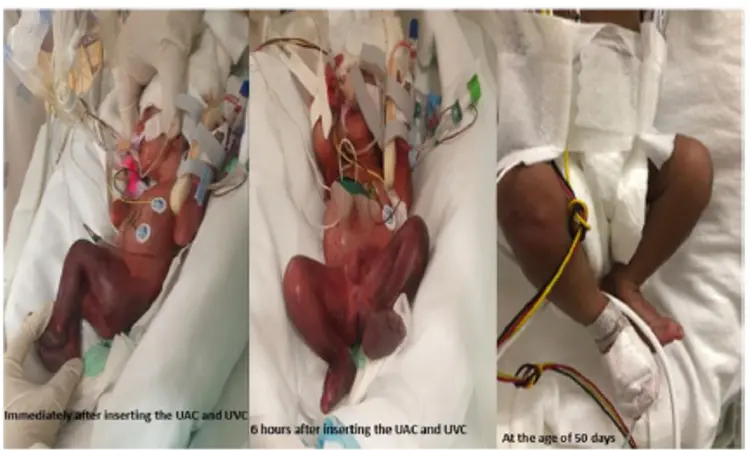- Home
- Medical news & Guidelines
- Anesthesiology
- Cardiology and CTVS
- Critical Care
- Dentistry
- Dermatology
- Diabetes and Endocrinology
- ENT
- Gastroenterology
- Medicine
- Nephrology
- Neurology
- Obstretics-Gynaecology
- Oncology
- Ophthalmology
- Orthopaedics
- Pediatrics-Neonatology
- Psychiatry
- Pulmonology
- Radiology
- Surgery
- Urology
- Laboratory Medicine
- Diet
- Nursing
- Paramedical
- Physiotherapy
- Health news
- Fact Check
- Bone Health Fact Check
- Brain Health Fact Check
- Cancer Related Fact Check
- Child Care Fact Check
- Dental and oral health fact check
- Diabetes and metabolic health fact check
- Diet and Nutrition Fact Check
- Eye and ENT Care Fact Check
- Fitness fact check
- Gut health fact check
- Heart health fact check
- Kidney health fact check
- Medical education fact check
- Men's health fact check
- Respiratory fact check
- Skin and hair care fact check
- Vaccine and Immunization fact check
- Women's health fact check
- AYUSH
- State News
- Andaman and Nicobar Islands
- Andhra Pradesh
- Arunachal Pradesh
- Assam
- Bihar
- Chandigarh
- Chattisgarh
- Dadra and Nagar Haveli
- Daman and Diu
- Delhi
- Goa
- Gujarat
- Haryana
- Himachal Pradesh
- Jammu & Kashmir
- Jharkhand
- Karnataka
- Kerala
- Ladakh
- Lakshadweep
- Madhya Pradesh
- Maharashtra
- Manipur
- Meghalaya
- Mizoram
- Nagaland
- Odisha
- Puducherry
- Punjab
- Rajasthan
- Sikkim
- Tamil Nadu
- Telangana
- Tripura
- Uttar Pradesh
- Uttrakhand
- West Bengal
- Medical Education
- Industry
A rare case of bilateral lower limb gangrene in a neonate : Case report

Researchers from Women's Wellness and Research center,Qatar report an interesting case of reversible bilateral lower limb gangrene in a preterm neonate.
A preterm male infant was born to 31 years old gravida 5, para 3 mother at 25 week of gestation. Mother developed preterm premature rupture 2 weeks prior to delivery for which she was given a course of oral erythromycin and also received a course of betamethasone.
At the emergency room she was seen with fully dilated cervix on the day of delivery. On detailed evaluation by obstretic team, a cervical cerclage was found insitu that was compressing umbilical cord leading to faint umbilical pulsations. Hence the team decided to save the infant by releasing cervical stitch.
At birth the neonate had respiratory distress requiring positive pressure ventilation, endotracheal intubation and surfactant administration. Also in the delivery room infant was to have symmetrical blackish discolouration of the lower half of the body with a line of demarcation just below the umbilicus.The distal pulsations were felt equally on both lower limbs.Emergency Doppler of bilateral lower limbs was done and result was normal. The neonatal team considered several serious differential diagnoses including aortic thrombosis or embolism, umbilical arterial thrombosis or embolism, umbilical venous thrombosis, distal aortic or femoral arterial stenosis, septic thrombosis or embolism and congenital hypercoagulable states . Sepsis screen done was negative Head, renovascular and abdominal ultrasound studies did not show any evidence of vascular anomalies, thrombosis, or tortuosity.
As umbilical venous and umbilical arterial catheterization was clinically mandated,based on the equal and strong distal pulsations in both lower limbs as well as the Doppler ultrasound findings, the team decided to insert the umbilical catheters with very close monitoring. Close monitoring showed gradual improvement in the colour of the lower half of the body which started at the age of 6 hours till complete resolution on the third day of life.
Authors conclude-"As a final diagnostic etiology, the neonatal team labelled this patient as a reversible bilateral lower limb gangrene due to umbilical cord compression by the cervical cerclage."
Source: Elmalik EE, Bayoumi MAA. Reversible bilateral lower limb gangrene in a neonate at birth. BMJ Case Rep. 2021 Sep 20;14(9):e243959. doi: 10.1136/bcr-2021-243959.
Dr Kamal Kant Kohli-MBBS, DTCD- a chest specialist with more than 30 years of practice and a flair for writing clinical articles, Dr Kamal Kant Kohli joined Medical Dialogues as a Chief Editor of Medical News. Besides writing articles, as an editor, he proofreads and verifies all the medical content published on Medical Dialogues including those coming from journals, studies,medical conferences,guidelines etc. Email: drkohli@medicaldialogues.in. Contact no. 011-43720751


